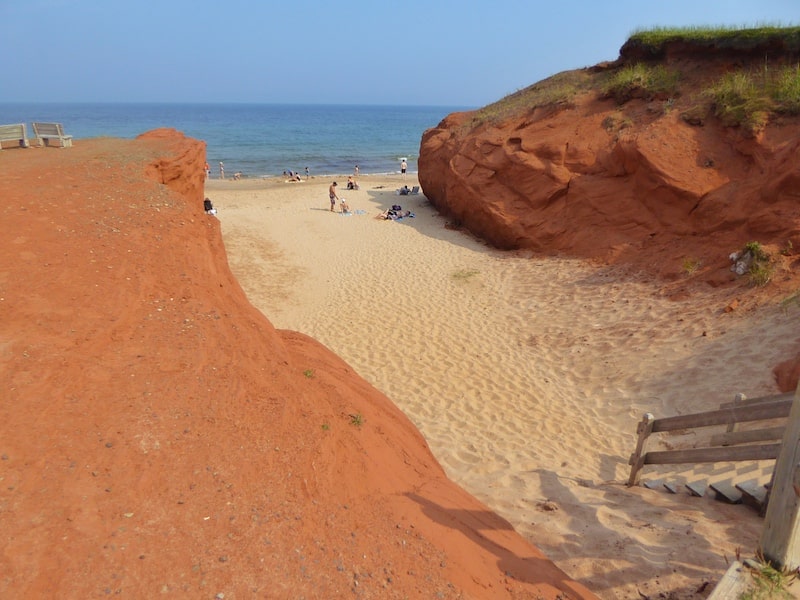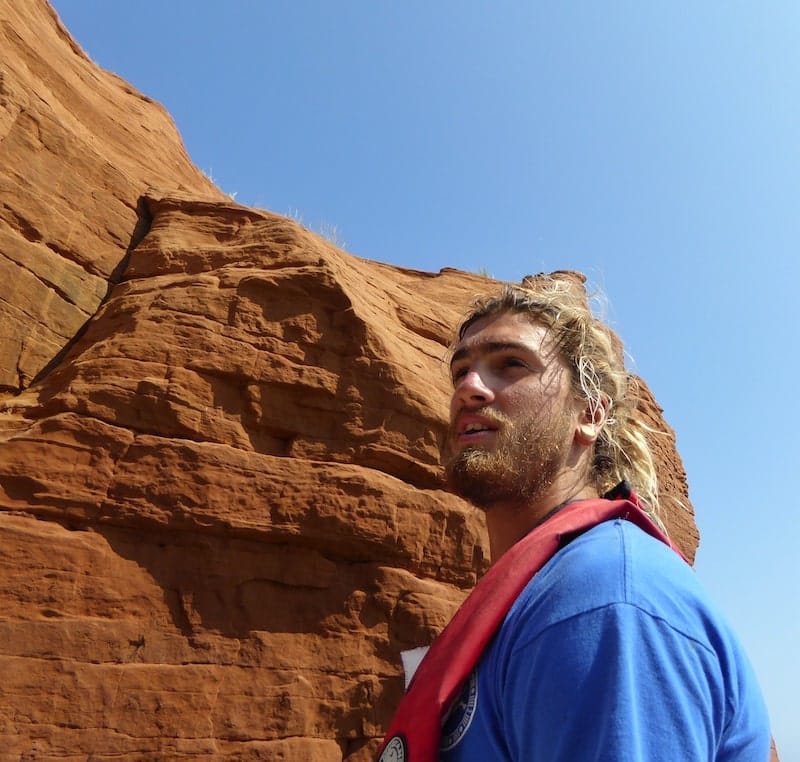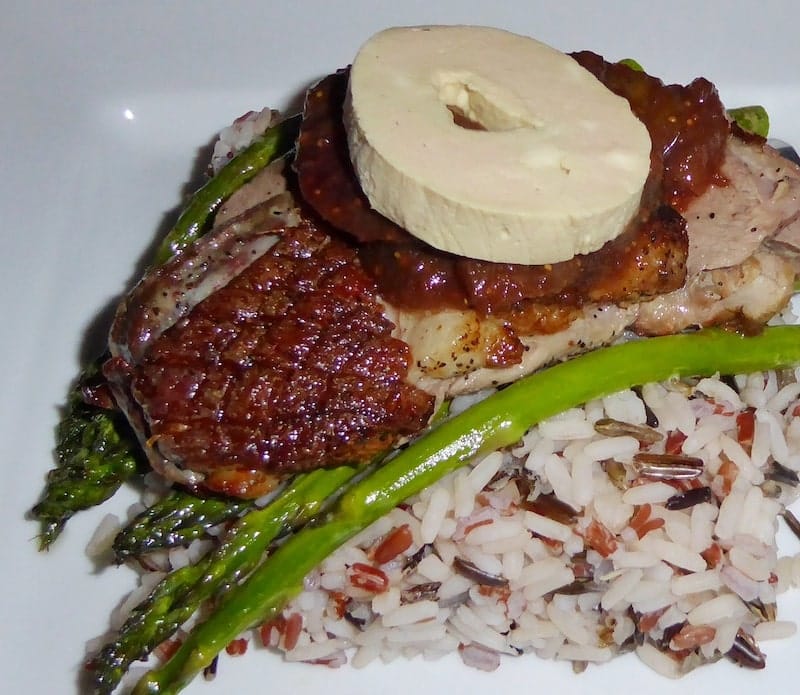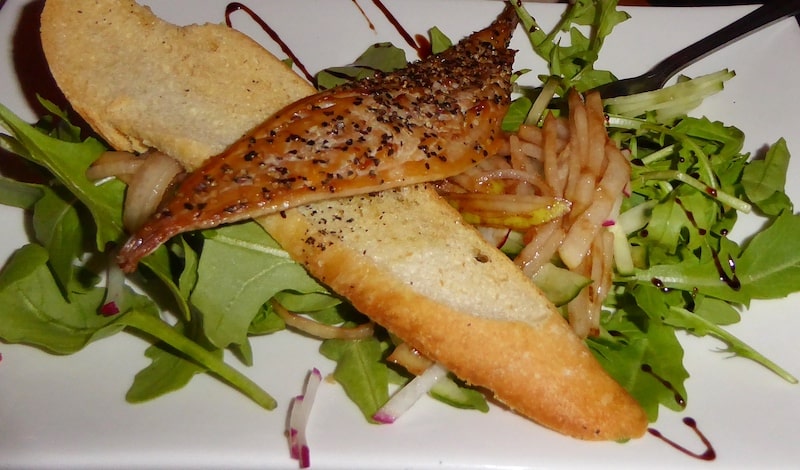Updated November 26, 2023
Cycling Magdalen Islands Canada has its challenges. Roughly translated, the back of my cycling jersey says, “I conquered the wind of the islands.” But, I have a confession. I didn’t ‘conquer’ anything, least of all the islands’ legendary winds. For leisure cyclists like myself, there’s no point in letting relentless headwinds sap the joy out of it. There are ways to work around them.
On two wheels or four, Canada’s Magdalen Islands definitely warrant a spot on your travel list.
Where are the Magdalen Islands?
The Îles de la Madeleine, or Magdalen Islands, are affectionately known as ‘The Maggies.’ They’re a windswept archipelago of several small islands, stitched together with long sand dunes. On a map, they resemble a beached fishhook in the middle of Canada’s Gulf of Saint Lawrence.
You’re forgiven if you’ve never heard of them. Outside of Quebec and Atlantic Canada’s Acadian communities, the Magdalen Islands are one of Canada’s best-kept secrets.
Getting there
Getting to the islands is a trip in itself, a key part of the adventure.
By sea, a daily ferry leaves from Atlantic Canada. It takes five hours to travel the 128 kilometres from Souris, Prince Edward Island (PEI). The CTMA (Coopérative de transport maritime et aérien) ferry docks at Cap-aux-Meules, the largest settlement on the islands.
The MV Madeleine II can accommodate 300 vehicles and 1500 passengers. Amenities on board include It has 15 cabins, a restaurant, coffee shop, pub, store, observation lounge, rest and entertainment lounges, kennel, and a children’s playroom. Enjoy the live music or on a sunny summer day, the decks are a perfect place to soak up the sun and watch out for whales.
The beauty of the islands
The rolling green hills of Entry Island welcomed us to the archipelago. It’s the only inhabited island not connected to the others, except by ferry or private boat. The windswept sea of green is an anomaly, an isolated English-speaking community in a virtual sea of French. Of the archipelago’s total population of more than 13,000, fewer than five per cent are anglophones.
Despite its diminutive size, the archipelago’s landscape features many contrasts — rounded knolls, stark barrens, rocky promontories, ochre cliffs, lagoons, wetlands, sweeping sand dunes, and long beaches of white sand.
There are two types of rock in the Magdalen cliffs — grey sandstone and red sandstone. The grey is more resilient to erosion and is found in some of the highest landforms.
The red sandstone erodes much more readily, in some areas up to a metre each year. After it erodes and washes into the sea, over time it loses its red colour. It eventually washes up as brilliantly white sand stretching as far as the eye can see.
Cycling Magdalen Islands Canada
The Magdalen Islands are so compact that cyclists can easily get around without a vehicle. For a nominal charge, we left our car and utility trailer at the Dockside Bed and Breakfast. It’s beside the ferry terminal in Souris, PEI. Walking on the ferry with bikes translated into considerable savings.
The islands are part of the Green Route, Quebec’s impressive network of cycling trails. Cyclists are welcomed with many cyclist-friendly initiatives. Our accommodation had secure bike lockers, and most businesses have bike stands for their customers.
Route 199, a two-lane paved highway, runs from one end of the archipelago to the other. It’s about 100 kilometres in length. The wide paved shoulder is dotted with no-parking signs to provide a safer passage for cyclists.
Le Pédalier and Éco-vélo des Îles offer a wide range of bike rentals and cycling gear. RÉGÎM operates four public transit lines on the archipelago and has bike racks on its vehicles.
For a description of the various cycling routes, consult the Tourisme Îles de la Madeleine website.The Official Cycling Map can be purchased at the Tourist Information Centre.
Work with the winds
While waiting for the ferry in Souris, we quizzed a tour operator on recommended bike routes. His response of “follow the wind” became our mantra. The headwinds can be so strong that it’s a struggle to keep a bike upright. No worries, it’s possible to get the better of them by organizing a shuttle service. Let the shuttle deal with the headwinds, and enjoy the pleasures of cycling with a tailwind on the return trip. We enlisted the services of Taxi Madeli that could take up to three bikes, and headed to Île du Havre Aubert at the southern end.
Havre-Aubert
The main village on each island carries the same name as the island. With its natural harbour, Havre-Aubert (on Île du Havre Aubert) was chosen as the site of the first Acadian settlement.
With the influx of visitors, mostly from Quebec, the population of the Magdalens quadruples during the summer season. Nevertheless, fishing remains the primary economic activity. It was surprising to see wooden lobster traps are still the norm, set during a nine-week spring season. The larger traps are for snow crab, set in very deep water as soon as the ice is gone from the Gulf. That season lasts until the quota is achieved.
An interesting attraction in Havre-Aubert is the historical site of La Grave. Its name comes from the French “grève” meaning pebbly and sandy terrain. La Grave offers an insight into what it was like when the first Acadians arrived in the 1700s. Fishermen once laid salted cod directly on the pebbles to dry. Former fishing shacks remain part of the present-day commercial landscape.
Arts and crafts shops, businesses, cafés, and restaurants make La Grave a popular place for both Madelinots and visitors.
On the way to the Magdalens, we all shared what we were looking forward to the most. The usual surfaced — food, cycling, and scenery. Claudette, a former language teacher and proud Acadian from New Brunswick, was most looking forward to hearing the unique language of the islands, with its several distinct accents. In La Grave, Claudette’s expectations were exceeded when she not only found a T-shirt with “expressions des Îles de la Madeleine” but a comprehensive dictionary!!
The Musée de la Mer was one of the highlights of our visit to Havre-Aubert. The well organized bilingual exhibit presented an excellent portrait of the islands’ civilization over the centuries. There are stories of Indigenous people, conquerors, pioneers, fishers, and the shipwrecked, many of whom made the islands their home.
Cap-aux-Meules
Cap-aux-Meules is the administrative and service centre of the islands. Close to the ferry terminal is the Tourisme Îles de la Madeleine Information Centre where we were welcomed by friendly, well-informed, and extremely helpful staff.
Cap-aux-Meules boasts a deep-water harbour protected by a dolos breakwater. A dolos is a concrete block in a complex geometrical shape. When used in large numbers, they offer protection against the erosive force of the ocean. They work by dissipating, rather than blocking the energy of waves. They’re more difficult to dislodge than a flat surface of similar weight.
Hugging the cape overlooking the harbour in Cap-aux-Meules is a 187-step wooden staircase. It offers panoramic views of the harbour, marina, and Île du Havre aux Maisons to the north.
Île du Havre aux Maisons
Île du Havre aux Maisons is remarkable for its treeless landscape. The scarcity of trees is the result of extensive logging during the last century.
Unlike what we found on the ride to Île du Havre Aubert, the terrain around the Chemin de la Pointe-Basse on Île du Havre aux Maisons was quite hilly.
Traditional houses are part of the islands’ charm. With Acadian flags and lines of laundry flapping in the ever-present wind, no two houses are the same. Many flaunt at least two vibrant colours, with outbuildings and fences in matching shades. Houses along the shoreline were traditionally used as navigational aids, identifiable by their bright colours. Fishermen’s houses were often painted in the same colours as their boats.
At one time, the small fishing village of Pointe-Basse was an important source of smoked herring. The Fumoir d’Antan preserves the tradition. It offers a rich selection of smoked produce, including mackerel, cod, sturgeon, trout, razor clams, and pork.
Fromagerie du Pied-de-Vent’s Canadiennes produce raw whole milk for the semisoft Pied-de-Vent cheese. The Canadienne is a dairy breed developed in French Canada from cattle imported back in the seventeenth century from the Brittany and Normandy regions of France.
The calm waters of Dune-du-Sud were inviting. The red cliffs sculpted by the ocean are dotted with sheltered inlets along a beautiful 18-kilometre stretch of white sand.
Enjoy the islands from the water
Scenic views are plentiful on land, but enjoying the islands from the water offers another perspective. Excursions en mer is a company operating out of the marina near the ferry terminal in Cap-aux-Meules. We figured a zodiac would put us closer to the cliffs and some of the 300 species of birds that live on, or pass through, the islands.
Our skipper, Alexis Boudreau, expertly handled the zodiac, stopping at regular intervals for entertaining and informative commentary.
For example, we stopped by a rocky outcrop where walruses once lay in the sun. Although they were huge, almost as big as cows, the animals were agile enough to use their tusks to help them climb out of the water. In the 17th and 18th centuries, they were slaughtered for the oil in their thick layers of fat. The hunt was so intensive, that by 1799 the whole herd had been destroyed. As a result, walruses have completely vanished from the archipelago.
Alexis steered the zodiac in and out of several water-carved caves and grottoes. They’re the result of the incessant, relentless assault of the sea on the islands’ landscape. They’re perfect places to be explored by kayak.
The food, OMGoodness the food
The cuisine of the islands is amazing. Everywhere, the food surpassed our expectations.
From charcuterie snacks at La Boucherie Côte à Côte to smoked mackerel salad, duck, and smoked scallops at Les Pas Perdus …
… the culinary landscape of the islands is impressive.
If the Magdalen Islands aren’t on your travel list, they should be!
If you found this post useful, please share it by clicking on one or more social media buttons. Have you visited Canada’s Magdalen Islands? Have you cycled the islands? What can you add to my brief overview of our visit? Please add to the conversation in the comments. Thank you.
Care to pin for later?
Image credit: map (Kelisi at the English-language Wikipedia)






















After reading this article, I see why the Maggies are so attractive as a summer holiday spot. Hope to visit one day. The food descriptions and that picture are amazing.
Where is a good place to stay if we just bring bikes on the ferry
Anywhere in Cap-aux-Meules would be a good choice. The ferry from Souris docked in Cap-aux-Meules in early evening so we cycled to our accommodation in fading light. Because we’d booked late, there wasn’t much choice so we split our four nights between a motel just over the bridge on Île-du-Havre-aux-Maisons (first 2 nights) and Cap-aux-Meules (last 2 nights). Cap-aux-Meules is centrally located for cycling in both major directions, and facilities such as restaurants, coffee shops, charcuteries, bike shops… are close by. Book early, may the winds be pleasant, and enjoy your trip!
I am biking the Magdalen Islands in August with 11 ladies, so looking forward to this trip.